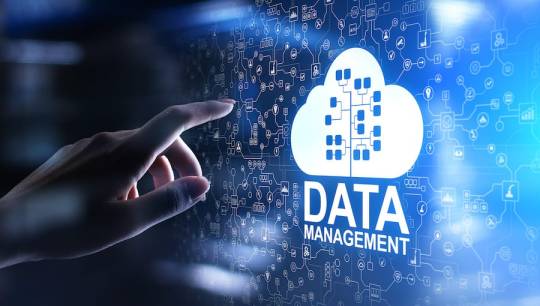#machine learning in cybersecurity
Explore tagged Tumblr posts
Text
AI in Cybersecurity vs Traditional Methods: What’s More Effective?

Compare how Artificial Intelligence for Cybersecurity stacks up against legacy tools. See why Machine Learning in Cybersecurity is becoming the gold standard for digital defense.
0 notes
Text
How to Use AI to Predict and Prevent Cyberattacks
In today’s rapidly evolving digital landscape, cyberattacks are becoming more frequent, sophisticated, and devastating. As businesses and individuals increasingly rely on technology, the need to bolster cybersecurity has never been more critical. One of the most promising solutions to combat this growing threat is Artificial Intelligence (AI). AI can enhance cybersecurity by predicting,…
#AI cybersecurity solutions#AI for cybersecurity#AI in fraud detection#AI threat detection#Check Point Software#Cisco#CrowdStrike#Darktrace#FireEye#Fortinet#IBM Security#machine learning in cybersecurity#malware detection with AI#McAfee#Microsoft Defender#Palo Alto Networks#predict cyberattacks with AI#prevent cyberattacks with AI#Qualys#SentinelOne#Sophos#Trend Micro#Zscaler.
0 notes
Text






Cyber Beach
#photo#photography#cyberpunk#cybercore#cyber y2k#cyber aesthetic#futuristic#futurism#cybersecurity#cybernetics#cyberpunk aesthetic#cyberpunk art#ai art#ai#ai generated#ai image#artificial intelligence#technology#machine learning#future#machine#beach#beachlife#beachwear#sea#lake#night beach#night#nightwing#sky
310 notes
·
View notes
Text

AI’s Role in Business Process Automation
Automation has come a long way from simply replacing manual tasks with machines. With AI stepping into the scene, business process automation is no longer just about cutting costs or speeding up workflows—it’s about making smarter, more adaptive decisions that continuously evolve. AI isn't just doing what we tell it; it’s learning, predicting, and innovating in ways that redefine how businesses operate.
From hyperautomation to AI-powered chatbots and intelligent document processing, the world of automation is rapidly expanding. But what does the future hold?
What is Business Process Automation?
Business Process Automation (BPA) refers to the use of technology to streamline and automate repetitive, rule-based tasks within an organization. The goal is to improve efficiency, reduce errors, cut costs, and free up human workers for higher-value activities. BPA covers a wide range of functions, from automating simple data entry tasks to orchestrating complex workflows across multiple departments.
Traditional BPA solutions rely on predefined rules and scripts to automate tasks such as invoicing, payroll processing, customer service inquiries, and supply chain management. However, as businesses deal with increasing amounts of data and more complex decision-making requirements, AI is playing an increasingly critical role in enhancing BPA capabilities.
AI’s Role in Business Process Automation
AI is revolutionizing business process automation by introducing cognitive capabilities that allow systems to learn, adapt, and make intelligent decisions. Unlike traditional automation, which follows a strict set of rules, AI-driven BPA leverages machine learning, natural language processing (NLP), and computer vision to understand patterns, process unstructured data, and provide predictive insights.
Here are some of the key ways AI is enhancing BPA:
Self-Learning Systems: AI-powered BPA can analyze past workflows and optimize them dynamically without human intervention.
Advanced Data Processing: AI-driven tools can extract information from documents, emails, and customer interactions, enabling businesses to process data faster and more accurately.
Predictive Analytics: AI helps businesses forecast trends, detect anomalies, and make proactive decisions based on real-time insights.
Enhanced Customer Interactions: AI-powered chatbots and virtual assistants provide 24/7 support, improving customer service efficiency and satisfaction.
Automation of Complex Workflows: AI enables the automation of multi-step, decision-heavy processes, such as fraud detection, regulatory compliance, and personalized marketing campaigns.
As organizations seek more efficient ways to handle increasing data volumes and complex processes, AI-driven BPA is becoming a strategic priority. The ability of AI to analyze patterns, predict outcomes, and make intelligent decisions is transforming industries such as finance, healthcare, retail, and manufacturing.
“At the leading edge of automation, AI transforms routine workflows into smart, adaptive systems that think ahead. It’s not about merely accelerating tasks—it’s about creating an evolving framework that continuously optimizes operations for future challenges.”
— Emma Reynolds, CTO of QuantumOps
Trends in AI-Driven Business Process Automation
1. Hyperautomation
Hyperautomation, a term coined by Gartner, refers to the combination of AI, robotic process automation (RPA), and other advanced technologies to automate as many business processes as possible. By leveraging AI-powered bots and predictive analytics, companies can automate end-to-end processes, reducing operational costs and improving decision-making.
Hyperautomation enables organizations to move beyond simple task automation to more complex workflows, incorporating AI-driven insights to optimize efficiency continuously. This trend is expected to accelerate as businesses adopt AI-first strategies to stay competitive.
2. AI-Powered Chatbots and Virtual Assistants
Chatbots and virtual assistants are becoming increasingly sophisticated, enabling seamless interactions with customers and employees. AI-driven conversational interfaces are revolutionizing customer service, HR operations, and IT support by providing real-time assistance, answering queries, and resolving issues without human intervention.
The integration of AI with natural language processing (NLP) and sentiment analysis allows chatbots to understand context, emotions, and intent, providing more personalized responses. Future advancements in AI will enhance their capabilities, making them more intuitive and capable of handling complex tasks.
3. Process Mining and AI-Driven Insights
Process mining leverages AI to analyze business workflows, identify bottlenecks, and suggest improvements. By collecting data from enterprise systems, AI can provide actionable insights into process inefficiencies, allowing companies to optimize operations dynamically.
AI-powered process mining tools help businesses understand workflow deviations, uncover hidden inefficiencies, and implement data-driven solutions. This trend is expected to grow as organizations seek more visibility and control over their automated processes.
4. AI and Predictive Analytics for Decision-Making
AI-driven predictive analytics plays a crucial role in business process automation by forecasting trends, detecting anomalies, and making data-backed decisions. Companies are increasingly using AI to analyze customer behaviour, market trends, and operational risks, enabling them to make proactive decisions.
For example, in supply chain management, AI can predict demand fluctuations, optimize inventory levels, and prevent disruptions. In finance, AI-powered fraud detection systems analyze transaction patterns in real-time to prevent fraudulent activities. The future of BPA will heavily rely on AI-driven predictive capabilities to drive smarter business decisions.
5. AI-Enabled Document Processing and Intelligent OCR
Document-heavy industries such as legal, healthcare, and banking are benefiting from AI-powered Optical Character Recognition (OCR) and document processing solutions. AI can extract, classify, and process unstructured data from invoices, contracts, and forms, reducing manual effort and improving accuracy.
Intelligent document processing (IDP) combines AI, machine learning, and NLP to understand the context of documents, automate data entry, and integrate with existing enterprise systems. As AI models continue to improve, document processing automation will become more accurate and efficient.
Going Beyond Automation
The future of AI-driven BPA will go beyond automation—it will redefine how businesses function at their core. Here are some key predictions for the next decade:
Autonomous Decision-Making: AI systems will move beyond assisting human decisions to making autonomous decisions in areas such as finance, supply chain logistics, and healthcare management.
AI-Driven Creativity: AI will not just automate processes but also assist in creative and strategic business decisions, helping companies design products, create marketing strategies, and personalize customer experiences.
Human-AI Collaboration: AI will become an integral part of the workforce, working alongside employees as an intelligent assistant, boosting productivity and innovation.
Decentralized AI Systems: AI will become more distributed, with businesses using edge AI and blockchain-based automation to improve security, efficiency, and transparency in operations.
Industry-Specific AI Solutions: We will see more tailored AI automation solutions designed for specific industries, such as AI-driven legal research tools, medical diagnostics automation, and AI-powered financial advisory services.
AI is no longer a futuristic concept—it’s here, and it’s already transforming the way businesses operate. What’s exciting is that we’re still just scratching the surface. As AI continues to evolve, businesses will find new ways to automate, innovate, and create efficiencies that we can’t yet fully imagine.
But while AI is streamlining processes and making work more efficient, it’s also reshaping what it means to be human in the workplace. As automation takes over repetitive tasks, employees will have more opportunities to focus on creativity, strategy, and problem-solving. The future of AI in business process automation isn’t just about doing things faster—it’s about rethinking how we work all together.
Learn more about DataPeak:
#datapeak#factr#technology#agentic ai#saas#artificial intelligence#machine learning#ai#ai-driven business solutions#machine learning for workflow#ai solutions for data driven decision making#ai business tools#aiinnovation#digitaltools#digital technology#digital trends#dataanalytics#data driven decision making#data analytics#cloudmigration#cloudcomputing#cybersecurity#cloud computing#smbs#chatbots
2 notes
·
View notes
Text
Still Moving Forward
Just about to finish Course 3, Networks and Network Security as part of the Google Cybersecurity Professional Certification.
Struggled over the past week or so after having an operation under general anesthetic, I'm not used to staying in one place for a long time or lying for extended periods, its wreaked havoc on my body.
But I'm back at it, smashed course and coming to the end of course 3. Done some practise projects and learnt a lot of stuff. Been getting distracted a lot by wanting to engage with more knowledge so I end up talking to Gemini a lot (yes I have moved away from ChatGPT).
Used Gemini to help me setup Ubuntu and start using the command line to perform some basic tasks as I start to understand that more. Even got my daughter who is five to play some text based games with me, it's all she wants to do now.
It has made me think about IT education when I was in school. We were shown some basic website access stuff and how to use excel but no one ever taught us terminal and other backend techniques that could have inspired us more. I do remember talking to the technician a few times when I forgot a password or needed help with something, I remember being impressed by the technology he was surrounded. That must have been over 25 years ago.
rambling now. Anyway, I'm back at it and looking to smash it all by Sunday 10th November, it's now Thursday.
#artificial intelligence#cybersecurity#machine learning#programming#python#software engineering#command line#terminal#linux#ubuntu
3 notes
·
View notes
Text

The Comprehensive Guide to Web Development, Data Management, and More
Introduction
Everything today is technology driven in this digital world. There's a lot happening behind the scenes when you use your favorite apps, go to websites, and do other things with all of those zeroes and ones — or binary data. In this blog, I will be explaining what all these terminologies really means and other basics of web development, data management etc. We will be discussing them in the simplest way so that this becomes easy to understand for beginners or people who are even remotely interested about technology. JOIN US
What is Web Development?
Web development refers to the work and process of developing a website or web application that can run in a web browser. From laying out individual web page designs before we ever start coding, to how the layout will be implemented through HTML/CSS. There are two major fields of web development — front-end and back-end.
Front-End Development
Front-end development, also known as client-side development, is the part of web development that deals with what users see and interact with on their screens. It involves using languages like HTML, CSS, and JavaScript to create the visual elements of a website, such as buttons, forms, and images. JOIN US
HTML (HyperText Markup Language):
HTML is the foundation of all website, it helps one to organize their content on web platform. It provides the default style to basic elements such as headings, paragraphs and links.
CSS (Cascading Style Sheets):
styles and formats HTML elements. It makes an attractive and user-friendly look of webpage as it controls the colors, fonts, layout.
JavaScript :
A language for adding interactivity to a website Users interact with items, like clicking a button to send in a form or viewing images within the slideshow. JOIN US
Back-End Development
The difference while front-end development is all about what the user sees, back end involves everything that happens behind. The back-end consists of a server, database and application logic that runs on the web.
Server:
A server is a computer that holds website files and provides them to the user browser when they request it. Server-Side: These are populated by back-end developers who build and maintain servers using languages like Python, PHP or Ruby.
Database:
The place where a website keeps its data, from user details to content and settings The database is maintained with services like MySQL, PostgreSQL, or MongoDB. JOIN US
Application Logic —
the code that links front-end and back-end It takes user input, gets data from the database and returns right informations to front-end area.

Why Proper Data Management is Absolutely Critical
Data management — Besides web development this is the most important a part of our Digital World. What Is Data Management? It includes practices, policies and procedures that are used to collect store secure data in controlled way.
Data Storage –
data after being collected needs to be stored securely such data can be stored in relational databases or cloud storage solutions. The most important aspect here is that the data should never be accessed by an unauthorized source or breached. JOIN US
Data processing:
Right from storing the data, with Big Data you further move on to process it in order to make sense out of hordes of raw information. This includes cleansing the data (removing errors or redundancies), finding patterns among it, and producing ideas that could be useful for decision-making.
Data Security:
Another important part of data management is the security of it. It refers to defending data against unauthorized access, breaches or other potential vulnerabilities. You can do this with some basic security methods, mostly encryption and access controls as well as regular auditing of your systems.
Other Critical Tech Landmarks
There are a lot of disciplines in the tech world that go beyond web development and data management. Here are a few of them:
Cloud Computing
Leading by example, AWS had established cloud computing as the on-demand delivery of IT resources and applications via web services/Internet over a decade considering all layers to make it easy from servers up to top most layer. This will enable organizations to consume technology resources in the form of pay-as-you-go model without having to purchase, own and feed that infrastructure. JOIN US
Cloud Computing Advantages:
Main advantages are cost savings, scalability, flexibility and disaster recovery. Resources can be scaled based on usage, which means companies only pay for what they are using and have the data backed up in case of an emergency.
Examples of Cloud Services:
Few popular cloud services are Amazon Web Services (AWS), Microsoft Azure, and Google Cloud. These provide a plethora of services that helps to Develop and Manage App, Store Data etc.
Cybersecurity
As the world continues to rely more heavily on digital technologies, cybersecurity has never been a bigger issue. Protecting computer systems, networks and data from cyber attacks is called Cyber security.
Phishing attacks, Malware, Ransomware and Data breaches:
This is common cybersecurity threats. These threats can bear substantial ramifications, from financial damages to reputation harm for any corporation.
Cybersecurity Best Practices:
In order to safeguard against cybersecurity threats, it is necessary to follow best-practices including using strong passwords and two-factor authorization, updating software as required, training employees on security risks.
Artificial Intelligence and Machine Learning
Artificial Intelligence (AI) and Machine Learning (ML) represent the fastest-growing fields of creating systems that learn from data, identifying patterns in them. These are applied to several use-cases like self driving cars, personalization in Netflix.
AI vs ML —
AI is the broader concept of machines being able to carry out tasks in a way we would consider “smart”. Machine learning is a type of Artificial Intelligence (AI) that provides computers with the ability to learn without being explicitly programmed. JOIN US
Applications of Artificial Intelligence and Machine Learning: some common applications include Image recognition, Speech to text, Natural language processing, Predictive analytics Robotics.
Web Development meets Data Management etc.
We need so many things like web development, data management and cloud computing plus cybersecurity etc.. but some of them are most important aspects i.e. AI/ML yet more fascinating is where these fields converge or play off each other.
Web Development and Data Management
Web Development and Data Management goes hand in hand. The large number of websites and web-based applications in the world generate enormous amounts of data — from user interactions, to transaction records. Being able to manage this data is key in providing a fantastic user experience and enabling you to make decisions based on the right kind of information.
E.g. E-commerce Website, products data need to be saved on server also customers data should save in a database loosely coupled with orders and payments. This data is necessary for customization of the shopping experience as well as inventory management and fraud prevention.
Cloud Computing and Web Development
The development of the web has been revolutionized by cloud computing which gives developers a way to allocate, deploy and scale applications more or less without service friction. Developers now can host applications and data in cloud services instead of investing for physical servers.
E.g. A start-up company can use cloud services to roll out the web application globally in order for all users worldwide could browse it without waiting due unavailability of geolocation prohibited access.
The Future of Cybersecurity and Data Management
Which makes Cybersecurity a very important part of the Data management. The more data collected and stored by an organization, the greater a target it becomes for cyber threats. It is important to secure this data using robust cybersecurity measures, so that sensitive information remains intact and customer trust does not weaken. JOIN US
Ex: A healthcare provider would have to protect patient data in order to be compliant with regulations such as HIPAA (Health Insurance Portability and Accountability Act) that is also responsible for ensuring a degree of confidentiality between a provider and their patients.
Conclusion
Well, in a nutshell web-developer or Data manager etc are some of the integral parts for digital world.
As a Business Owner, Tech Enthusiast or even if you are just planning to make your Career in tech — it is important that you understand these. With the progress of technology never slowing down, these intersections are perhaps only going to come together more strongly and develop into cornerstones that define how we live in a digital world tomorrow.
With the fundamental knowledge of web development, data management, automation and ML you will manage to catch up with digital movements. Whether you have a site to build, ideas data to manage or simply interested in what’s hot these days, skills and knowledge around the above will stand good for changing tech world. JOIN US
#Technology#Web Development#Front-End Development#Back-End Development#HTML#CSS#JavaScript#Data Management#Data Security#Cloud Computing#AWS (Amazon Web Services)#Cybersecurity#Artificial Intelligence (AI)#Machine Learning (ML)#Digital World#Tech Trends#IT Basics#Beginners Guide#Web Development Basics#Tech Enthusiast#Tech Career#america
4 notes
·
View notes
Text
Why Quantum Computing Will Change the Tech Landscape
The technology industry has seen significant advancements over the past few decades, but nothing quite as transformative as quantum computing promises to be. Why Quantum Computing Will Change the Tech Landscape is not just a matter of speculation; it’s grounded in the science of how we compute and the immense potential of quantum mechanics to revolutionise various sectors. As traditional…
#AI#AI acceleration#AI development#autonomous vehicles#big data#classical computing#climate modelling#complex systems#computational power#computing power#cryptography#cybersecurity#data processing#data simulation#drug discovery#economic impact#emerging tech#energy efficiency#exponential computing#exponential growth#fast problem solving#financial services#Future Technology#government funding#hardware#Healthcare#industry applications#industry transformation#innovation#machine learning
2 notes
·
View notes
Text

#the machine#artificial intelligence#machine learning#electronic thinking engines#large language model#multi modal#cybersecurity
2 notes
·
View notes
Text
Let's connect!
I’d love to connect with folks who geek out over:
- Security Research
- Vulnerability Research
- Threat Intelligence
- Reverse Engineering
- Malware Analysis
- Emerging Threats
- Bug Bounty Hunting
- Physical Pen Testing
- Red Teaming
- Artificial Intelligence
- Machine Learning
- Algorithms
- Quantum Physics
- Weird Stuff
Let's build a diverse and fascinating community together! https://twitter.com/geeknik https://github.com/geeknik
2 notes
·
View notes
Text
What is Google’s Project Nimbus and why is it controversial?
Google’s Project Nimbus is a cloud computing contract that Google and Amazon signed with the Israeli government in April 2021. With a hefty price tag of $1.2 billion, this collaboration between tech behemoths and the Israeli government was poised to revolutionize the way data is stored and processed. But not all is sunny with Project Nimbus; it’s a project that has become as controversial as it…

View On WordPress
#Amazon#Artificial intelligence#Cybersecurity#Data Privacy#Digital Transformation#Google#Government Contracts#Human Rights#Machine Learning#Project Nimbus#Tech Controversy#Tech Ethics
2 notes
·
View notes
Text
Free resources to learn hacking
- https://www.hacksplaining.com/ (A good site to learn all about different types of vulnerabilities, ways to hack, ways to prevent hacking, etc. with hands on basic labs as well as quizzes and terminology.)
- https://hackthissite.org/ (This site provides in depth hacking challenges for beginners and people of all knowledge sets, there isn't much hand-holding as you progress, but YouTube helps a LOT.)
- YouTube (Content creators such as David Bombal, NetworkChuck, etc. come to mind, although John Hammond I believe is a bit underrated and very well knowledgable as well as less of a snake oil salesman when it comes to his content and his abilities and also do not discount small YouTubers as well, because some can be very knowledgeable from some of the ones I've looked for help with, particularly Chuck Moore and Sean Mancini.)
- https://www.khanacademy.org/ (Now hear me out, it doesn't have a TON of hacking content but when you need help with some stuff, like for me I needed some basics of cryptography and things such as that, it helped a good bit with some fundamentals, so try seeing if it has some content you might like.)
- Keeping up with news also generally helps you see current trends in security which helps as well.
- https://hbh.sh/home (Personally have not tried this yet, but Hellbound Hackers I have heard is a great wealth of information as well as having their own discord I believe for communication which is exciting.)
- https://www.reddit.com/r/HowToHack/
Lastly I wanted to say if you are studying for Cybersecurity certs I heard Jason Dion and Professor Messer are quite good and if you download Visual Studio Code - https://code.visualstudio.com/ as well as the extension that you need, learning code such as HTML, CSS, JavaScript, etc. can NEVER hurt and can only help (especially when looking over code and connecting the dots), my personal favorites for coding/scripting for software languages that I am learning is Python as well as PowerShell because of the ease of use and ability to create decent projects in a reasonable amount of time (learning Linux and MySQL helps as well but it may take longer to learn, it all depends on your preferences and trial and error, as well as being determined.)
I hope my post helps! (and remember if you are a college student, particularly WGU, you get discounts/free offers for websites such as Udemy, LinkedIn Learning, etc.)
Thanks.
19 notes
·
View notes
Text

TOP 10 courses that have generally been in high demand in 2024-
Data Science and Machine Learning: Skills in data analysis, machine learning, and artificial intelligence are highly sought after in various industries.
Cybersecurity: With the increasing frequency of cyber threats, cybersecurity skills are crucial to protect sensitive information.
Cloud Computing: As businesses transition to cloud-based solutions, professionals with expertise in cloud computing, like AWS or Azure, are in high demand.
Digital Marketing: In the age of online businesses, digital marketing skills, including SEO, social media marketing, and content marketing, are highly valued.
Programming and Software Development: Proficiency in programming languages and software development skills continue to be in high demand across industries.
Healthcare and Nursing: Courses related to healthcare and nursing, especially those addressing specific needs like telemedicine, have seen increased demand.
Project Management: Project management skills are crucial in various sectors, and certifications like PMP (Project Management Professional) are highly valued.
Artificial Intelligence (AI) and Robotics: AI and robotics courses are sought after as businesses explore automation and intelligent technologies.
Blockchain Technology: With applications beyond cryptocurrencies, blockchain technology courses are gaining popularity in various sectors, including finance and supply chain.
Environmental Science and Sustainability: Courses focusing on environmental sustainability and green technologies are increasingly relevant in addressing global challenges.
Join Now
learn more -

#artificial intelligence#html#coding#machine learning#python#programming#indiedev#rpg maker#devlog#linux#digital marketing#top 10 high demand course#Data Science courses#Machine Learning training#Cybersecurity certifications#Cloud Computing courses#Digital Marketing classes#Programming languages tutorials#Software Development courses#Healthcare and Nursing programs#Project Management certification#Artificial Intelligence courses#Robotics training#Blockchain Technology classes#Environmental Science education#Sustainability courses
2 notes
·
View notes
Text

Top Data Science Courses With Certificate ⬇️
1-IBM Data Science Professional Certificate
https://imp.i384100.net/YgYndj
2-Google Data Analytics Professional Certificate
https://imp.i384100.net/x9jAxk
3-Google Data Analytics Professional Certificate
https://imp.i384100.net/x9jAxk
4-Introduction to Data Science Specialization
https://imp.i384100.net/Ryqyry
5-Applied Data Science with Python Specialization
https://imp.i384100.net/GjkEPn
6-Google Advanced Data Analytics Professional Certificate
https://imp.i384100.net/1r5E3B
7-What is Data Science?
https://imp.i384100.net/JzmRaN
8-Data Science Specialization
https://imp.i384100.net/BX9BmB
9-Python for Data Science, AI & Development
https://imp.i384100.net/g1ARWv
10-Foundations of Data Science
https://imp.i384100.net/nL2Wza
11-IBM Data Analyst Professional Certificate
https://imp.i384100.net/jWGKxa
12-Machine Learning Specialization
https://imp.i384100.net/k0gLAV
#online courses#course#certificate#data analysis#online jobs#data science#courses#jobs#machine learning#cybersecurity
3 notes
·
View notes
Text







City
#photo#photography#cyberpunk#cybercore#cyber y2k#cyber aesthetic#futuristic#futurism#cybersecurity#cybernetics#cyberpunk aesthetic#cyberpunk art#ai art#ai#ai generated#ai image#artificial intelligence#technology#machine learning#future#machine#beach#beachlife#beachwear#sea#lake#night beach#night#nightwing#sky
3 notes
·
View notes
Text
Future of AI: Predictions and Trends in Artificial Intelligence
Introduction: Exploring the Exciting Future of AI
Artificial Intelligence (AI) has become an integral part of our lives, revolutionizing the way we work, communicate, and interact with technology. As we delve into the future of AI, it is essential to understand the predictions and trends that will shape this rapidly evolving field. From machine learning to predictive analytics, natural language processing to robotics, and deep learning to ethical considerations, the possibilities seem limitless. In this article, we will explore the exciting future of AI and its potential impact on various industries and aspects of our lives.
The Rise of Machine Learning: How AI is Evolving
Machine learning, a subset of AI, has been a driving force behind the advancements we have witnessed in recent years. It involves training algorithms to learn from data and make predictions or decisions without explicit programming. As we move forward, machine learning is expected to become even more sophisticated, enabling AI systems to adapt and improve their performance over time.
One of the key trends in machine learning is the rise of deep learning, a technique inspired by the structure and function of the human brain. Deep learning algorithms, known as neural networks, are capable of processing vast amounts of data and extracting meaningful patterns. This has led to significant breakthroughs in areas such as image recognition, natural language processing, and autonomous vehicles.
Predictive Analytics: Unleashing the Power of AI in Decision-Making
Predictive analytics, powered by AI, is transforming the way organizations make decisions. By analyzing historical data and identifying patterns, AI systems can predict future outcomes and provide valuable insights. This enables businesses to optimize their operations, improve customer experiences, and make data-driven decisions.
In the future, predictive analytics is expected to become even more accurate and efficient, thanks to advancements in machine learning algorithms and the availability of vast amounts of data. For example, AI-powered predictive analytics can help healthcare providers identify patients at risk of developing certain diseases, allowing for early intervention and personalized treatment plans.
Natural Language Processing: Revolutionizing Human-Computer Interaction
Natural Language Processing (NLP) is a branch of AI that focuses on enabling computers to understand and interact with human language. From voice assistants like Siri and Alexa to chatbots and language translation tools, NLP has already made significant strides in improving human-computer interaction.
In the future, NLP is expected to become even more advanced, enabling computers to understand context, emotions, and nuances in human language. This will open up new possibilities for virtual assistants, customer service bots, and language translation tools, making communication with technology more seamless and natural.
Robotics and Automation: AI's Impact on Industries and Jobs
AI-powered robotics and automation have the potential to revolutionize industries and reshape the job market. From manufacturing and logistics to healthcare and agriculture, robots and automated systems are already making significant contributions.
In the future, we can expect to see more advanced robots capable of performing complex tasks with precision and efficiency. This will lead to increased productivity, cost savings, and improved safety in various industries. However, it also raises concerns about job displacement and the need for reskilling and upskilling the workforce to adapt to the changing job landscape.
Deep Learning: Unlocking the Potential of Neural Networks
Deep learning, a subset of machine learning, has gained immense popularity in recent years due to its ability to process and analyze complex data. Neural networks, the foundation of deep learning, are composed of interconnected layers of artificial neurons that mimic the structure of the human brain.
The future of deep learning holds great promise, with potential applications in fields such as healthcare, finance, and cybersecurity. For example, deep learning algorithms can analyze medical images to detect diseases at an early stage, predict stock market trends, and identify anomalies in network traffic to prevent cyberattacks.
Ethical Considerations: Addressing the Challenges of AI Development
As AI continues to advance, it is crucial to address the ethical considerations associated with its development and deployment. Issues such as bias in algorithms, privacy concerns, and the impact on jobs and society need to be carefully considered.
To ensure the responsible development and use of AI, organizations and policymakers must establish ethical guidelines and regulations. Transparency, accountability, and inclusivity should be at the forefront of AI development, ensuring that the benefits of AI are accessible to all while minimizing potential risks.
AI in Healthcare: Transforming the Medical Landscape
AI has the potential to revolutionize healthcare by improving diagnosis, treatment, and patient care. From analyzing medical images to predicting disease outcomes, AI-powered systems can assist healthcare professionals in making more accurate and timely decisions.
In the future, AI is expected to play an even more significant role in healthcare. For example, AI algorithms can analyze genomic data to personalize treatment plans, predict disease outbreaks, and assist in drug discovery. This will lead to improved patient outcomes, reduced healthcare costs, and enhanced overall healthcare delivery.
Smart Cities: How AI is Shaping Urban Living
AI is transforming cities into smart, connected ecosystems, enhancing efficiency, sustainability, and quality of life. From traffic management and energy optimization to waste management and public safety, AI-powered systems can analyze vast amounts of data and make real-time decisions to improve urban living.
In the future, smart cities will become even more intelligent, leveraging AI to optimize resource allocation, reduce congestion, and enhance citizen services. For example, AI-powered sensors can monitor air quality and automatically adjust traffic flow to reduce pollution levels. This will lead to more sustainable and livable cities for future generations.
AI in Education: Enhancing Learning and Personalization
AI has the potential to revolutionize education by personalizing learning experiences, improving student outcomes, and enabling lifelong learning. Adaptive learning platforms powered by AI can analyze student data and provide personalized recommendations and feedback.
In the future, AI will play a more significant role in education, enabling personalized learning paths, intelligent tutoring systems, and automated grading. This will empower students to learn at their own pace, bridge learning gaps, and acquire the skills needed for the future job market.
Cybersecurity: Battling the Dark Side of AI
While AI offers numerous benefits, it also poses significant challenges in the realm of cybersecurity. As AI becomes more sophisticated, cybercriminals can exploit its capabilities to launch more advanced and targeted attacks.
To combat the dark side of AI, cybersecurity professionals must leverage AI-powered tools and techniques to detect and prevent cyber threats. AI algorithms can analyze network traffic, identify patterns of malicious behavior, and respond in real-time to mitigate risks. Additionally, organizations must invest in cybersecurity training and education to stay ahead of evolving threats.
Conclusion: Embracing the Future of AI and Its Limitless Possibilities
The future of AI is filled with exciting possibilities that have the potential to transform industries, enhance our daily lives, and address some of the world's most pressing challenges. From machine learning and predictive analytics to natural language processing and robotics, AI is evolving at a rapid pace.
However, as we embrace the future of AI, it is crucial to address ethical considerations, ensure transparency and accountability, and prioritize inclusivity. By doing so, we can harness the power of AI to create a better future for all.
As AI continues to advance, it is essential for individuals, organizations, and policymakers to stay informed about the latest trends and developments. By understanding the potential of AI and its impact on various sectors, we can make informed decisions and leverage its capabilities to drive innovation and positive change.
The future of AI is bright, and by embracing it with an open mind and a focus on responsible development, we can unlock its limitless possibilities and shape a better future for generations to come.
#ai#artificial intelligence#ai power#future of ai#ai cybersecurity#ai in education#future of artificial intelligence#dark side of ai#ai predictions#machine learning#ai education#ai medicine
3 notes
·
View notes
Text
Finished Course 1 of the Google Cyber Security Certification.
Took a few days off from the cyber course because I've been chocka with work and I also went off on several tangents. I started a Data Science course using K means clustering, I started a Psychology course and found a few AI and climate change courses I'd like to do. Finally got back to the Cyber course today - I will say that even though I do have a tendency to engage my wandering mind I found my way back to the cyber course an felt the same enthusiasm as I did when I first started; which is a rarity for me I'll be honest.
I did however keep my mind somewhat focused on the cyber security stuff by watching the Hack Google series on YouTube. Through this I obviously went off onto other tangents and watched an interesting video about Google Research working with wild fire researchers to enable earlier detection systems and better modelling to fight the fires and save more lives. This is the importance of data and this is what we are capable of as a species, data is not just an advertisers wet dream.
Anyway on to course 2 which is Play It Safe: Manage Security Risks.
I wonder how I could create a career using these newly gained skills to help in the climate crisis fight? That would be a worthwhile career.
#artificial intelligence#machine learning#programming#python#software engineering#cybersecurity#google#climate crisis#career change
3 notes
·
View notes